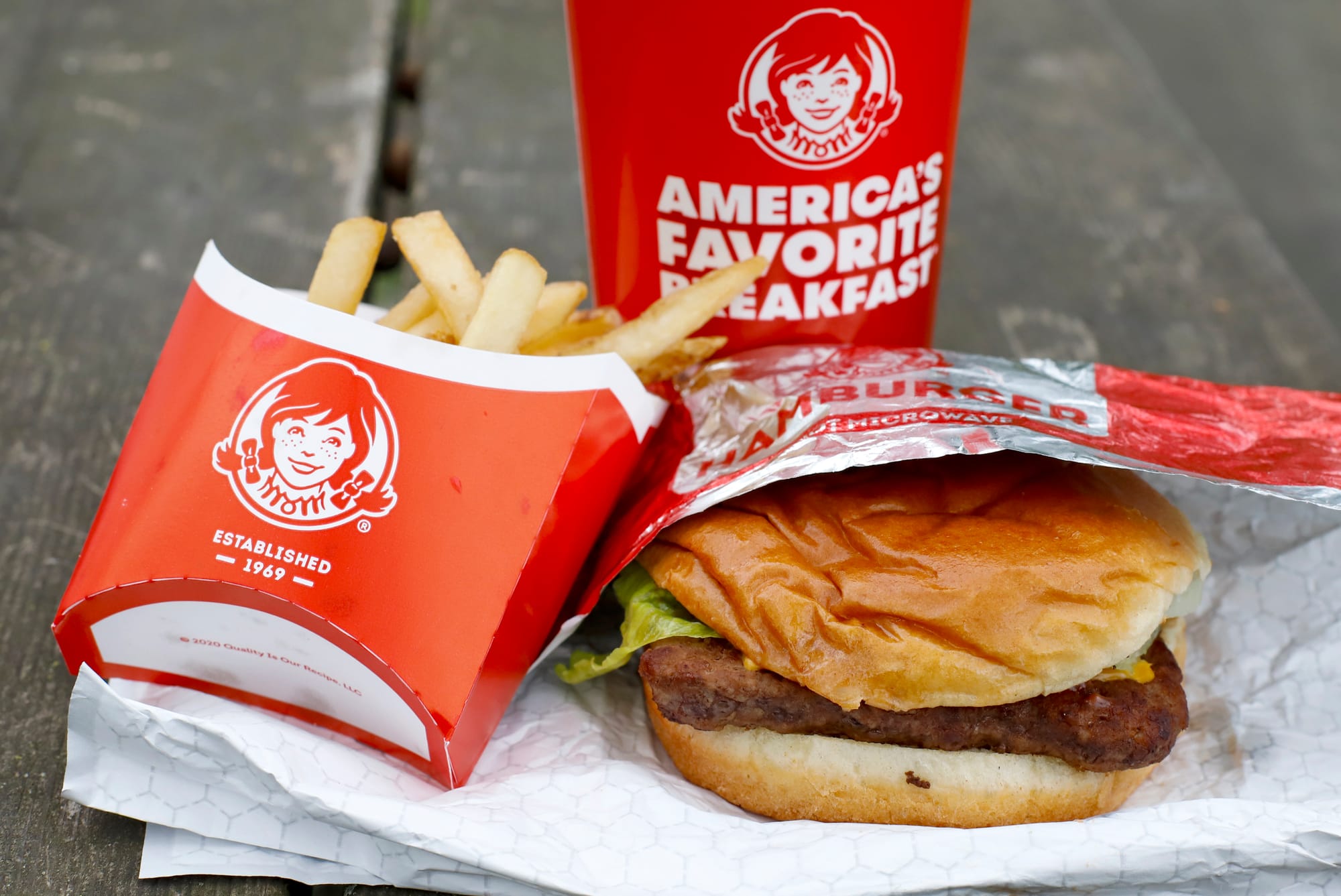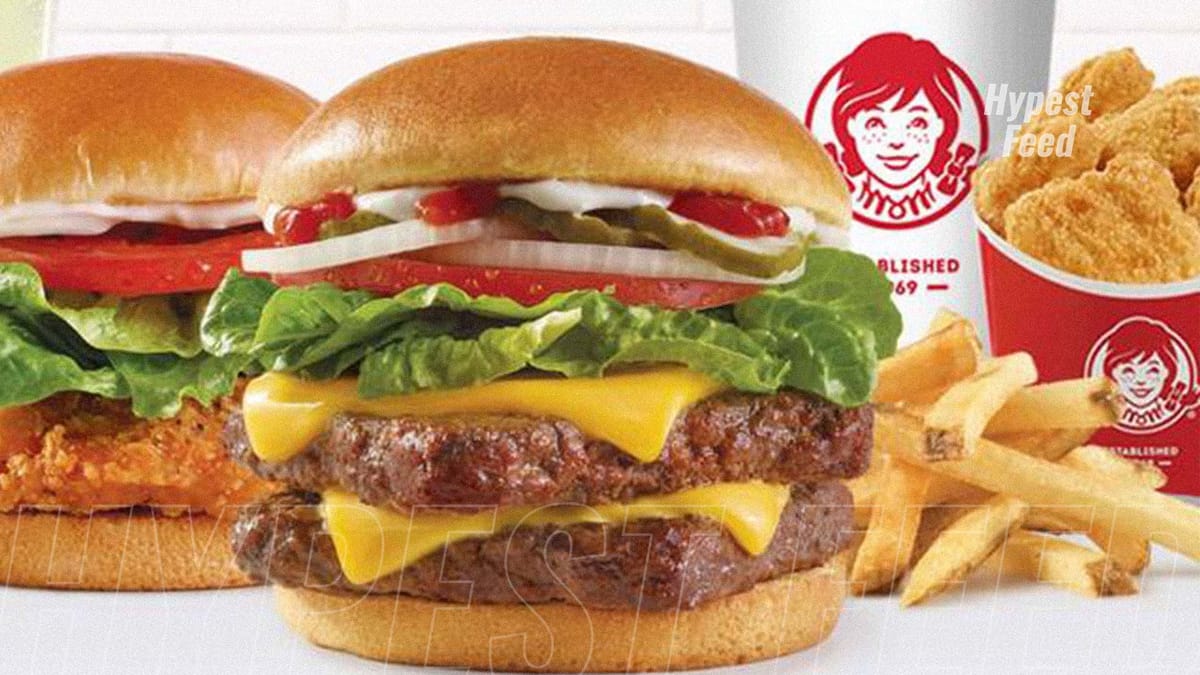Wendy's, known for its iconic burgers, is poised to revolutionize its pricing structure with an innovative concept reminiscent of Uber's dynamic pricing methodology. Beginning in 2025, the fast-food powerhouse intends to pilot this groundbreaking initiative, allowing menu item rates to vary depending on consumer demand throughout the day.
This bold endeavor comes amidst challenging economic conditions characterized by rising inflation, posing potential challenges for financially strained American diners. As the Ohio-headquartered corporation introduces these advanced digital displays, customers may encounter increased prices for signature dishes like the Dave's Single during periods of heightened demand, such as lunch and dinner rushes.
CEO Kirk Tanner disclosed the forthcoming project during a meeting with shareholders, highlighting the strategic investment of $20 million into state-of-the-art technology designed to adjust prices seamlessly without accruing extra operating expenses.
By implementing this forward-looking business practice, Wendy's strives to optimize profit margins while remaining sensitive to customer needs and preferences.

In a recent statement, newly appointed CEO Kirk Tanner expressed optimism regarding the impact of digital menu boards on Wendy's operations, anticipating heightened franchisee engagement and subsequent sales and profit enhancements. With Tanner's recent promotion to the chief executive position, he emphasized the potential for this technology to drive growth throughout the company's network of restaurants.
While discussing the implementation of dynamic pricing through these innovative displays, Tanner refrained from specifying any upper limit on potential price fluctuations for meals. Additionally, he did not confirm whether base prices might decrease during off-peak hours, leaving room for speculation on how this pricing model could evolve in response to varying demand patterns.
When questioned about the extent of potential price variations, Wendy's, boasting over 6,000 establishments across the country, declined to disclose specific details. A spokesperson for the renowned fast-food chain emphasized the strategic advantages of dynamic pricing, highlighting its ability to enhance competitiveness, adaptability in pricing strategies, and customer engagement.
The spokesperson further elaborated on Wendy's commitment to testing various innovative features aimed at improving both customer satisfaction and employee experiences within their establishments. This proactive approach underscores Wendy's dedication to evolving its operations to meet the evolving needs and preferences of its clientele.
Pricing discrepancies between different Wendy's locations already exist, with examples including a Dave's Single selling for $5.99 in Newark, NJ, compared to $8.19 at a Wendy's in Times Square. These regional variances indicate the existing flexibility in pricing strategies employed by the fast-food chain.
As Wendy's prepares to launch its dynamic pricing experiment, critics like Ted Jenkin, CEO of Atlanta-based wealth management firm oXYGen Financial, express concerns over the potential impact on consumers. Jenkin highlights the possibility of shifting lunch hour habits and the challenge of remembering previous prices when faced with fluctuating costs. Comparisons to current practices, such as guilt tipping, suggest that this new pricing model may exploit human memory limitations rather than providing a straightforward value proposition.
Regardless of the potential drawbacks, Wendy's persists in exploring innovative approaches to remain competitive and responsive to changing market dynamics.
Inspired by the proven success of dynamic pricing models in the aviation, hospitality, and transportation sectors, the restaurant industry has increasingly considered adopting similar strategies. Wendy's pioneering efforts in this area will undoubtedly attract attention from competitors such as McDonald's and Burger King, prompting careful observation of the outcomes resulting from this experimental phase.
According to industry analyst Peter Kalinowski, the growing adoption of dynamic pricing represents a promising means for restaurateurs to boost revenues through savvy pricing decisions. By embracing this trend, the restaurant sector demonstrates its agility in responding to emerging trends and capitalizing on opportunities to improve profitability.
Experts concur that the widespread application of dynamic pricing within the restaurant industry appears imminent, reflecting a collective shift towards more sophisticated pricing methods that align with contemporary market demands.



Member discussion: